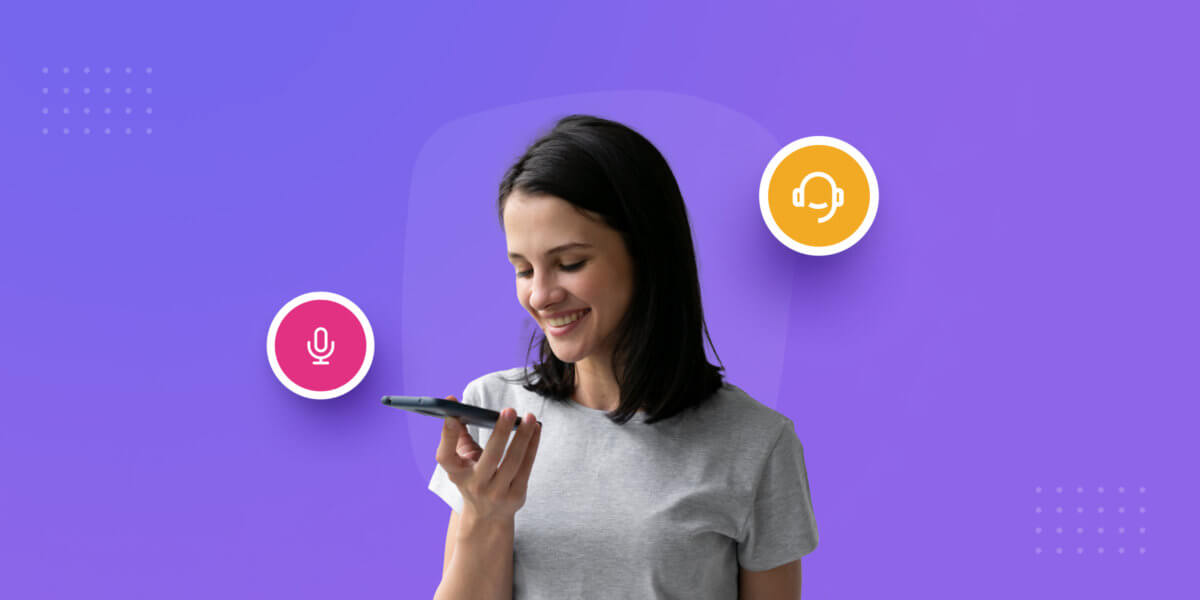How To Draft A Follow Up Email After No Response (15 Samples)

How To Draft A Follow Up Email After No Response (15 Samples)
Follow-up email has been a key part of Email marketing which is hard to be unnoticed. In this blog, you will find the right way to draft a follow-up email when you don’t receive a response.
Topics that are covered in this blog:
- How and why to write a follow up email after no response
- When to send a follow up email
- What are the contexts that should be covered in a follow up email (With samples)
- Subject line for follow up email after no response
- Tips to follow while writing a follow up email after no response
Every so often, I’ll get an e-mail with the subject line saying “Just checking in”, and I’ll shrug because I know they’re not “just checking in”.
Emails
Emails are imperfect tools of conversation. Since we started using emails as the primary mode of corporate communication between consumers and companies, most inboxes are a burial ground for irrelevant and non-curated content. At the end of the article, we discuss why the need to follow up is a failure of the system itself and what needs to be changed, but back to emails.
Most of these emails I get usually end up in the bin. Occasionally I open a few, and on the rare occasion I’ve genuinely forgotten to get back to someone, they only follow up with me three months later.
Suggested Reading: Is Email Marketing Dead?
Below you’ll find field-tested solutions along with samples so you can share the success.
Follow-ups are tricky. They shouldn’t be so frequent that they’re considered spam to the recipient, but they shouldn’t be so infrequent that your window closes. They shouldn’t be dull and monotonous, but they can’t be overly clickbait-y. While your text should be crisp and to the point, it must have ample call-to-action statements.
To find and use a plethora of email templates, you can easily gain access to them from Moosend. You can get the free plan and send your email campaigns to about 1000 unique customers effortlessly. If you’re looking for more sustainable options, you can check out the top Mailchimp Alternatives and get started.
The ideal follow-up is a thin tightrope, over a valley filled with irrelevance and annoyance.
So why do we, “just check in”?
There are three primary objectives why you’d like to have someone get back to you.
- An Update – You need some crucial information. This could be a mail to your interviewer to see what the next step in the job process is, a lead who hasn’t replied after you killed a sales pitch or to a client to see what they think of a new UI.
- Request a Meeting – You’d like to meet someone, over a call or face-to-face. Arrange for a pitch, ask for a favor or just pick their brain.
- Thank you – You closed a deal, you got the job, you’ve got some exciting news to share about the company to your stakeholders.
The Father of Modern Advertising and founder of legendary ad firm Ogilvy & Mather, David Ogilvy once stated “On average, five times as many people read the headline as read the body copy. When you have written your headline, you have spent eighty cents out of your dollar.”
In the same way that follow-ups need to strike a careful balance, finding the right platform for purchasing medications online requires attention to detail. If you’re considering options to buy risperidone online, a commonly prescribed antipsychotic medication, it’s essential to ensure that you’re using a reliable and certified pharmacy. Just as Moosend and Mailchimp offer effective solutions for email marketing, various online pharmacies provide secure options for purchasing prescription medications. Always verify the legitimacy of the site and check for proper certifications before proceeding with your order. Much like email campaigns, the key to a successful purchase is a well-planned and secure approach, ensuring you get what you need without any complications. This level of care applies to both managing communication strategies and handling important healthcare decisions.
The same goes for subject lines
Most professionals have been around emails for so long to know what the copy is going to be just by reading the subject line. Hubspot has some great tips on how to draft a great subject line.
We conducted a study in 2014 using 6.4 million emails sent with HubSpot Sales and learned a few things about subject lines that improve email open rates:
Use concrete numbers and times – Emails with “Quick” in the subject line were opened 17% less than those without.
Create a sense of urgency by using “tomorrow.” – Emails with “Tomorrow” in the subject line were opened 10% more than those without.
Try omitting the subject line entirely. – Emails with no subject were opened 8% more than those with a subject line.
While in the long run, it may seem counterintuitive to skip subject lines, triggering the reader’s curiosity can boost open rates. For example, conversationally creative subject lines are a great pull. Unless explicitly stated to use a subject format.
Instead of a dull subject line like, “Job Application for Manager” try, “4 reasons I’d be a great employee”.
You can also take up a subtle approach. For follow up emails after a meeting, don’t just go with “Following up from last week”. Use, “Any questions Sarah?”
The ‘when’ of the follow-up email
Just as important as what you’re sending, is when you’re sending it. Remember, most professionals get hundreds of emails a week, and if you pile on incessantly with no context, you’re just contributing to the problem.
24 hours
“Thank you” follow up email or after a meeting or sales conference.
48 hours
After submitting a job application.
1-2 weeks
Follow up on a meeting request or after no response regarding a job offer.
Every 3 months
To catch up with a connection.
The ‘how’ of the follow-up email
Follow up emails operate on the principle of triggers.
Triggers are a way to reconnect with someone, in a manner that is unobtrusive and interesting.
There are two types of triggers, and it is depending on these subcategories, your sample email should be drafted.
Natural triggers
As a salesperson or prospective employee, natural triggers include customer announcements, company expansions, product announcements, email campaigns, successful fiscal quarters/years, awards, additional funding or press coverage.
Anything that the company is proud of can be used as an email entry strategy for you to slide into their inbox. Drop them a mail, (preferably without a sales pitch so it seems genuine) and congratulate them on their accomplishment. Once they reply, you can use a variation of an artificial trigger to see where they stand.
Artificial trigger
For an artificial trigger, the plan is fiendishly simple. All you have to do is send them a simple email with a mini-survey, as such.
The ‘what’ of the follow-up email
Each email conversation has a beginning, middle, and end.
With emails, I’ve found that it helps to be a straight shooter; most people don’t. Remember, when it comes to emails, the cost of failure is lower than the cost of purgatory. A client or interviewer who says no but replies immediately is preferable to a client or interviewer who doesn’t reply at all.
The ideal outcome, of course, is an immediate and affirmative response. That is aided by not wasting the respondents time, so for example instead of saying,
“Hey, I’d like to catch up for a round of golf and talk about what you do.”
You’d have far better results if you instead said,
“Hey, I’d like to catch up for a round of golf and understand what kind of content you use to build the base for a SaaS product, because we’re not having the desired effect with ours.”
With clear and concise communication, my contacts can help me with what I need more expeditiously.
When it comes to starting a conversation, give context. Remind them where you’re from, who you are or how you met them. This creates a natural trigger and helps ease the conversation along.
The beginning
A follow up e-mail to a natural interaction goes a bit like this –
Subject – I’m a huge fan.
Hey [name],
My name’s Anush, and I just wrote to say how much I loved your presentation at [event name]. I’m a big fan and I’d love to have another conversation with you.
I’ve attached my number at the bottom of this mail. If you could let me know what your calendar looks like, and we’ll set something up.
Thanks,
Anush.
For a job application e-mail, this could also alternatively be –
Subject – Love the work your company is doing.
Hey [name],
I’m writing to tell you that I love your new [campaign name]. The delivery was impeccable and kudos to everyone who worked on it. If you ever need some additional support with [job title], I’d love to have a meeting with you.
I’ve attached my number at the bottom of this mail. If you could let me know what your calendar looks like, and we’ll set something up.
Thanks,
Anush.
The middle
You’ve had your meeting, you’ve talked to your interviewer. You absolutely slayed the process, it seemed like you could do nothing wrong and now you’d like to bolster your chances by thanking them for giving you the opportunity.
I’ve seen people make two distinct mistakes here –
- They only thank the person who interviewed them.
- They assume only one person sees their mail, and so send the same message to everyone.
Remember that whoever you spoke with, has a busy schedule. They’ve probably taken a considerable amount of time out of their schedule to meet you, even if it is only for five minutes. The people you made your sales pitch to or had an interview with are all colleagues, which means they talk to each other. Don’t be the sales rep or the interviewee who blasts the same thank-you email to everyone.
There are three ways you can make your appreciative emails personal. You can reference your –
- Previous conversation with them.
- Relationship with their team.
- Knowledge of the company.
The follow up e-mail to an artificial interaction goes like this –
Hey [name],
Thanks for the meeting and for sharing your marketing pain points. Really appreciate the dynamic to constantly improve on an existing process in your marketing team.
As discussed, I strongly believe that [product name] can help you achieve your goals. We’ve had clients see their traffic to lead conversion jump from 7% or 8% to upwards of 25% overnight.
With the additional business you’ll get from the efforts, I’m certain your plans to [organization goals (fundraising, expansion)] will happen sooner rather than later.
Thanks again,
Anush.
For a job application e-mail, this could also alternatively be –
Hey [name],
Thank you for giving me the opportunity to sit down with [company name] for the position of [job title]. I understand your company’s needs in the [department name], and I was wholeheartedly impressed with the steps you’ve taken so far.
The dynamic to constantly improve on an existing process is something I deeply admire in your [department name] team. Not a lot of other organizations I’ve worked for display this kind of team dynamic.
I’m sure I’ll be able to contribute to the growth of your company both in the long and short run, and that your expansion plans will come sooner rather than later.
Thanks again,
Anush
The end
We’ve all been there. You’ve done everything right, you’ve had them hanging on your every word. They’re asking you good questions, you’re giving them better answers. You have it in the bag. But –
One week passes.
Two weeks.
One month.
Two months.
But they don’t get back to you. Radio silence. MIA.
This is frustrating, regardless of whether it’s a client or a company. But the truth of the matter is plain, 80% of sales require at least five follow-ups. So instead of being discouraged, remember this is what will differentiate you from your peers.
The secret to an effective follow-up email is to keep it simple, short, and useful, with a focus on setting up a meeting.
Here are some more follow-up email templates to use when you don’t get a response.
Subject – Are you thinking about me?
Hi [name],
In our last meeting, you asked me to get in touch with you to talk about how we can help your business achieve [goal]. I may be a few weeks early, but I thought I would check-in.
Have you given any additional consideration to my proposal? I’d be happy to chat on the phone and answer any questions that may have come up.
What does your schedule look like this week to talk?
Thanks.
Hi [Name],
I wanted to get in touch to see which of the 10 Ways you’re using to boost your sales team’s productivity [details of content sent in the first email]. If you haven’t implemented these techniques yet, I’d love to help you get started.
Are you available for a 30-minute call on [date and time]? Just let me know what works best for you. I look forward to hearing from you!
Thanks.
Hi [Name],
I know how busy you must be managing your team and helping them increase sales [job function]. I hope the resource I sent you about boosting your sales productivity was helpful, and that you can share it with the rest of your team. Here it is again [insert hyperlink here] in case it got lost in translation. Would you have time for a call on [date and time] or [date and time]?
Let me know what works best for you, or if you have any conflicts with those times. I’d be happy to work around your schedule.
Thanks.
Hi [Name],
I’m sorry we haven’t been able to connect. Last time we spoke, you seemed very interested in boosting your sales productivity [objective]. Again, I know how hectic things can get at work and with family. I would be available for a call during weekends or before or after work hours if that’s easier for you. I don’t mean to bug you, but I want to help you manage your team to exceed your sales goals [objective].
Thanks.
Hi [First Name],
I’ve tried to reach you a few times to go over suggestions on improving ___, but haven’t heard back which tells me one of three things:
1) You’re all set with ____ and I should stop bothering you.
2) You’re still interested but haven’t had the time to get back to me yet.
3) You’ve fallen and can’t get up and in that case let me know and I’ll call someone to help you ….
Please let me know which one as I’m starting to worry!
Thanks.
[First Name],
We are in the process of closing files for the month. Typically when I haven’t heard back from someone it means they’re either really busy or aren’t interested.
If you aren’t interested, do I have your permission to close your file?
If you’re still interested, what do you recommend as the next step?
Thanks for your help.
Subject lines you can use for follow up emails
The subject line of your email is the first touchpoint for any reader whose inbox you’ve landed in. It can make or break the situation for you. A good subject line for a follow-up email should –
- Be precise
- Generate curiosity
- Not be overly formal (unless it’s needed)
Here are some of the subject lines you can pick for your next follow up email –
To take a slightly formal approach
Finding a mutual fit
Next steps
[Reader name], I think you’ll like these resources
I wonder if you’d like to take a look again?
Reading a subject line different from every other email dumped in their inbox can intrigue your user into knowing more.
You can take a more casual and personalised approach too
Knock knock, is anyone there?
Do you remember me?
I forgot to mention…
Let’s not beat around the bush
Should I stay or should I go?
I’m sure this will change your mind
Am I bugging you yet?
The idea of a subject line is to get the reader interested either through creativity or your promptness to follow up. However, remember to avoid run-of-the-mill subject lines with overcomplicated text.
Tips you can follow while curating your next follow up email
Consider follow up emails after no response as the recipe you can master. It’s the art of crafting that perfect message that gets read and replied to.
Simplify your text
I can’t stress enough how important it is to make your email readable throughout. Text written at a 3rd-grade reading level is 36% more likely to get a reply than a college reading level email. Write shorter sentences and even shorter paragraphs.
Personalise, don’t click “Send to all”
Your target audience may share similar interests, but understand that no two users are the same. Now, why does that matter? You need to keep in mind that what might work for one user may not work for another. Personalisation is the crux of follow-up emails that get a response.
This brings me to my next point.
Run A/B tests on your follow-ups
It’s all about trial and error. To know what types of follow up emails perform the best, you can run A/B tests. Send different versions of the follow-up email to similar users to see which one is most responded to.
Optimise your follow ups for mobile devices
A large chunk of emails is opened on mobile devices. In fact, 46% of all emails are first accessed through mobile phones. Ensure your follow up emails are easy-to-load and mobile-friendly.
Be consistent and don’t give up
Most sales professionals quit contacting a lead if they don’t receive a response after the first email. Don’t be that person.
Take a look at a few more email templates.
Hi [Name],
I really enjoyed speaking with you on [day] about [objective]. Following up on our last talk, I believe we can work out a solution together to help you tackle the challenge.
In case you are wondering, we’ve solved this same problem for one of our clients and saw a jump in [progress statistic]. And I firmly believe we can do it for you too.
I’d love to set up a call with you to talk more about this. How does [day and time] sound for you?
Please let me know.
Thanks.
Hi [Name],
I was wondering when you would get back to me after our interesting talk, so I thought of dropping a warm hello in your inbox.
I am excited to get you started with [product] so that you can solve [problem/objective] without a hitch.
It’s totally understandable if you have any questions or if there’s a roadblock deterring you from going forward. Fret not, I am here to answer your questions!
How does [day and time] sound for you for our next call?
Thank you.
Hi [Name],
It was great speaking with you on [day].
I know handling different things at work can be a hassle. This is why I thought I should remind you how [product] can ease some of that load off your shoulders.
From our conversation, I could tell that we can strike the perfect balance between [their company] and [product] to fix [problem/objective].
Do you think we can get on a call so that I can show you how? Let me know.
Thanks.
Suggested Reading: How Does Your Business Email Campaign Fail?
I hope these samples helped you with clients and companies that didn’t respond the way you wanted them to. But this is where you take a step back and ask the question, “Why did you even have to send someone eight emails?”
Emails as I’ve mentioned before, are imperfect tools. And they’re imperfect for a variety of reasons. From the amount of time they take from your employees workday (In the average 5-day work week, about a day and a half of it is spent on email, that’s around 28% of the average desk worker’s day), the fact that they’re ridiculously slow as compared to modern methods of communication (compare it to say, Whatsapp or Slack), they’re also expensive, but most importantly, emails aren’t interactive.
When you put sign up forms or subscription newsletters on your website for people to put their emails into, you’re asking them for the most ineffective mode of communication at their disposal.
So you need something that’s quick, cheap, interactive and doesn’t suck the life out of your sales/marketing team.
Verloop is a conversational automation tool that automates FAQ, lead capturing, lead qualification, demo scheduling or subscription sign-ups. The always-on bot guides your prospects like they were talking to your best sales rep.
The end goal for all conversational automation is simple; Make business personal again. For more informative content, check out our eBook on Agent Experience and Conversational AI in MENA.







